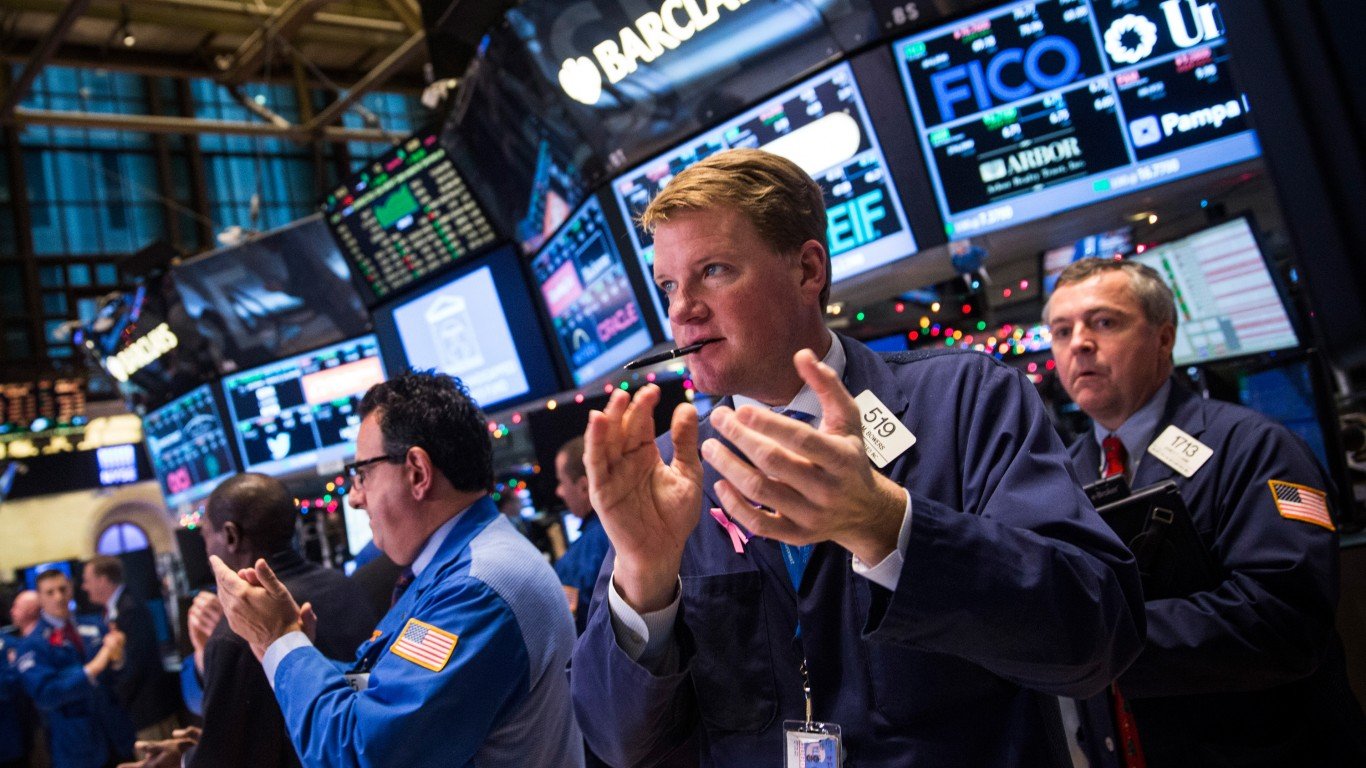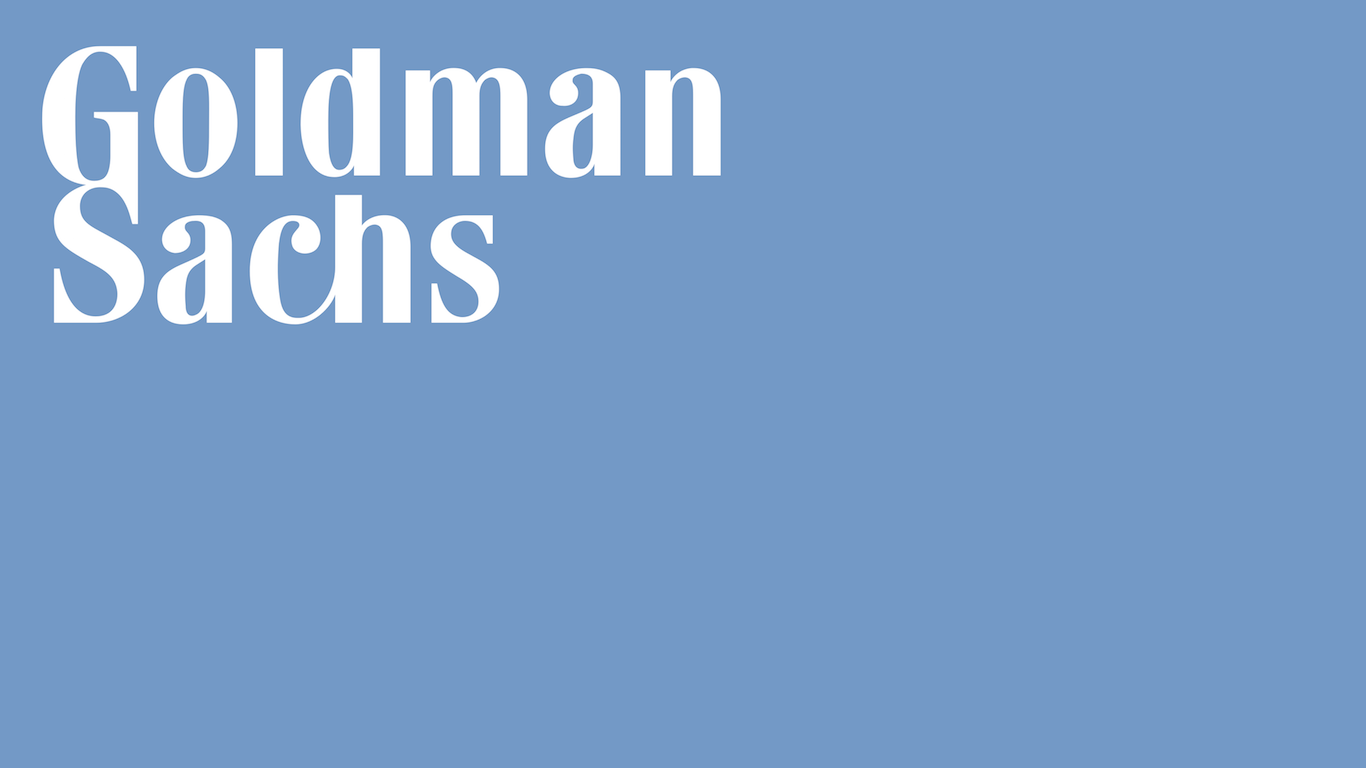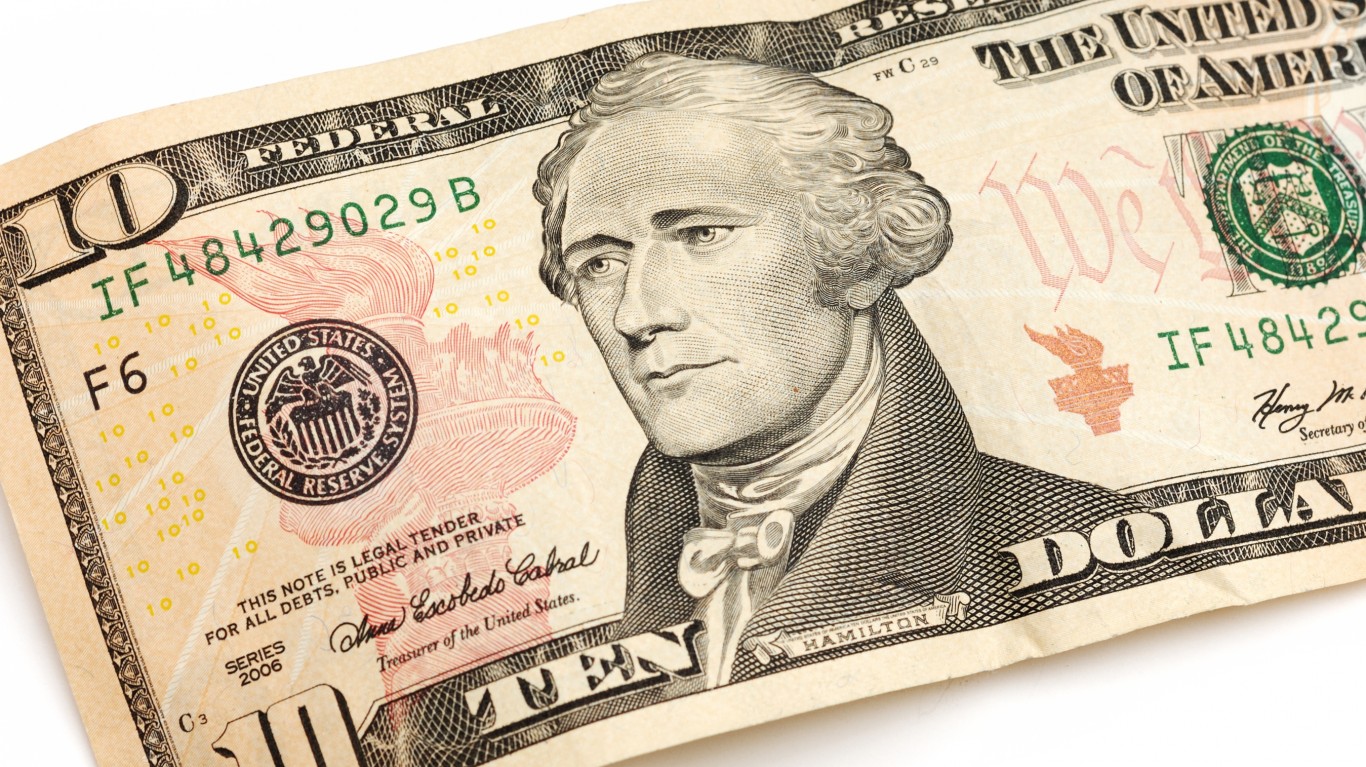

As 2019 gets into gear, there is a simple question that comes with a very difficult answer. Is the bull market that has raged since March of 2009 dead, or is it merely looking to find its footing on less stable ground? The year 2018 brought on major waves of volatility, and the end-of-year performance saw the Dow Jones industrial average (DJIA) post its worst December dating back to the Great Depression of the 1930s. It might seem easy on the surface to think it’s time for equity investors to just throw in the towel.
The actual DJIA index closed at 23,327.46, for a 5.6% loss in 2018, after 2017 brought gains of 25% on the Dow and more than 19% on the S&P 500. An alternative calculation for the Dow, represented by the so-called Diamonds ETF (DIA), in an effort to include the ever-important dividends, lost 8.5% in December alone and that wrecked the year to make for a 3.7% loss in 2018.
Asking whether the bull market is dead for 2019 comes with some rather cloudy views. 24/7 Wall St. conducts an annual review of the 30 Dow members for a forecast of how the market as a whole would be expected to perform in any given year. This may sound contrarian, or even ironic, but the outlook for 2019 was the first time in many years where the forecast’s methodology seemed to not reflect all the recent market volatility and expected headwinds facing the market in 2019.
There are many caveats and issues to consider here, but the preliminary 2019 consensus-based forecasting has offered up a likely target of 28,000 on the DJIA in 2019.
As for how this model worked in 2018 and in prior years, this can be reviewed easily. The 24/7 Wall St. model basically targeted the DJIA at 26,400 in 2018. That looks way off the end of year’s close of 23,327.46, but it actually was within about two percentage points of the 2018 all-time high of 26,951.81. Also worth noting was that the model’s Dow 26,400 target was breached in just the first three weeks of 2018. And then came the first wave of major volatility, followed by more, and then more. This same model forecast an 8.4% gain in the Dow suggested 21,422 in 2017, but the actual move was a 25% gain to 24,719.22 at that year’s end. That’s why these targets need to regarded with some skepticism. Other annual calculations and forecasts are also available.
The major stock indexes of the Dow, S&P 500 and Nasdaq underperformed the consensus estimates in 2018 after having outperformed every single large brokerage firm’s Wall Street strategist expectations by a wide margin in 2017. Now comes the hard part of determining whether to bail out entirely on stocks in 2018, or whether it’s time to hold your nose and commit money back into the stock market.
One issue that the financial media tracks is the pullback from the high for determining a correction (10% down) or a bear market (20% down). The Dow’s 23,327.46 close for 2018 actually was down 13.4% from the peak of 26,951.81, giving the press the right to publish that the stock market is now somewhere in between correction and bear market territories. And the so-called bear market territory was nearly breached at the lows of December 2018, if you go back to before that record-breaking one-day rally of 1,000 points on the Dow.
After the passage of tax reform and after seeing gross domestic product (GDP) growth actually surpass that prior 4% barrier in 2018, there are myriad risks in 2019 that just have not been in the cards heading into any recent years. This year will have to contend with resolving international trade issues with China, a continued tempering of trade hostilities within the old NAFTA, Brexit, a Federal Reserve that wants to keep raising interest rates, and a potential inversion of the yield curve. Also worth factoring in are slower earnings and sales growth, slowing GDP, a slower yet pricier housing market, tighter credit standards, a new gridlock in Congress that is expected to be rather ugly and hostile, and a slew of presidential candidates all targeting the nation’s top job for 2020. And the financial media has been sounding the warning signs of a hangover-and-rate-induced recession ahead for most of 2018. This convergence of factors is almost mind-numbing compared to prior bull-bear cycles.
24/7 Wall St. has some serious concerns entering 2019 in using an analyst-driven consensus forecasting model alone, even if it has been rather useful in prior years. It seems fair to worry that the consensus analyst price targets heading into the end of 2018 generally seem to have not been brought down enough in many of the Dow stocks, when you consider how far off of the highs many companies closed out 2018. Still, a preset model is merely a means of calculation, and it allows investors to judge the state of the overall market.
Investors should consider a few things about the market heading into 2019. The Dow ended 2018 with a market capitalization of $5.56 trillion. The S&P 500, a broader and more fairly calculated index than the Dow, was valued at the end of 2018 at roughly 17.7 times trailing earnings, but the index was valued at 15.5 times forward earnings for the end of 2016. For the record, these are not exactly “bubble valuations” by any measure. As 2018 ended, the average (mean) dividend yield of all 30 Dow stocks was 2.7%. That compares to an average Dow dividend yield of 2.4% at the start of 2018 and 2.6% at the start of 2017. These are against 2018-ending yields of 2.68% on the 10-year Treasury note and 3.02% on the Treasury’s 30-year “long bond.”
At the start of 2018, seven of the 30 Dow stocks had higher share prices than the consensus price targets. At the start of 2018, the average upside of almost 4.4% to consensus targets would create an expected total return of roughly 6.75% for 2018. By combining the yields and price gains, the level came to almost 26,400 at the start of 2018.
Again, there seem to be some issues with this forecasting model here at the start of 2019. It is an attempt to form a consensus target pooling other consensus data, and it does not take dividend increases and stock buybacks into account. With a projected price increase of 20.2% on top of the 23,327.46 close of 2018, the current model’s 2019 forecast would be 28,039.60. Let’s call it 28,000 for rounding purposes. If you want to count the dividends in the implied upside calculations, it would generate a 2019 equivalent target of 28,669 for total return investors.
Before thinking that the stock market will surge to new highs and then some in 2019, serious thought needs to be used for balance here. First and foremost, it seems very likely that analysts will be lowering their price targets in January and early in 2019 to make their expected views more reachable. It’s just not normal to see consensus upside projections of over 20% for the market as a whole, particularly at this stage in the business cycle. Again, this would mark the 10th year of a bull market, if the market recovers back to its prior highs and goes higher. For gains of 20% or more to be real, here are just some of the hurdles that would have to likely happen: the Fed has to seriously slow its rate hikes, companies have to overcome inner-industry pressure in almost every sector, the China trade spat has to be resolved, the new congressional members have to not spend their whole time investigating and fighting every bill and policy, emerging markets need to stabilize, corporate earnings have to expand more than expected, buybacks and dividend hikes need to exceed already high expectations, Brexit needs to be contained or go smoothly, and housing cannot stagnate further. Oh, and international issues and geopolitics need to run smoothly. How likely does that all sound?
You have been given more than your fair share of warnings and caveats. Here is a review of all 30 Dow stocks, where they stood as 2019 kicked off, particularly some of the risks and hurdles for 2019, and how each one could help the Dow get to that 28,000 mark in 2019.
3M: Pain in 2018 After Solid 2017
3M Co. (NYSE: MMM) proved in 2018 that the 31% gain in 2017 was too far and too fast. It lost 19% in 2018. Conglomerates are no longer that popular, but 3M dealt its investors some pain all on its own with guidance and the conference calls after earnings later in 2018. The company was still able to keep growing its dividend year after year, and that is likely to continue. 3M shares closed out 2018 at $190.54, but the $203.94 consensus target price is lower than a year ago and implies a gain of about 9.9% ahead when including the 2.9% dividend yield. 3M ended 2018 valued at almost 21 times trailing earnings, but it was valued at just 17.6 times next year’s earnings estimate.
American Express: What Will Credit Card Metrics Do in 2019?
American Express Co. (NYSE: AXP) closed out 2018 at $95.32 a share, down 4% from a year earlier. One issue that may have kept pressure on in 2018, outside of the overall plunge in financial stocks, was that Amex shares had gained a surprising 34% in 2017. Gains of that size tend to rob future gains. Amex has a consensus target price of $114.94, with an implied gain of about 20% ahead, or 22% if you include its 1.6% dividend yield.
Warren Buffett and Berkshire Hathaway continue to remain the anchor shareholder for American Express. The company needs to make certain its clients do not see eroding credit metrics with delinquencies and charge-offs in 2019. Oddly enough, the consensus target price is less than 0.4% above Amex’s 52-week high.
Apple: Succeeded in the $1 Trillion Race, but Then Tanked
Apple Inc. (NASDAQ: AAPL) managed to become the first $1 trillion company by market cap in 2018. Unfortunately, CEO Tim Cook decided to stop breaking out individual sales metrics going forward, and that spooked and confused analysts. More than a handful of research analysts lowered their price targets and iPhone sales estimates late in 2018. Apple shares fell by almost 7% in 2018, versus a 46% return to the upside in 2017. Apple closed out 2018 at $157.74, and the consensus target price of $218.78 would imply a simple gain of 40%, without even considering its 1.9% dividend yield. That seems like a crazy-high target, but the share drops have been faster than analysts can ratchet down their targets. It seems logical to expect that analysts will continue to dial down some of their price targets as 2019 continues to develop.
That said, Apple’s all-time and 52-week high is $233.47, and Apple remains an aggressive buyer of stock with that unbelievable mountain of cash. For Apple to resume its impressive gains of yesteryear, it seems that Cook and his research and development teams in those fancy new headquarters are going to have to drum up a new line of business that enthralls the masses (and it’s probably not just another watch or wireless ear-pieces).
Boeing: Way Beyond the Former Boom-Bust Cycle
Boeing Co. (NYSE: BA) pulled back sharply in late 2018 but still managed to squeeze out a gain of over 9% in 2018. That was after the 2017 gain of 89% blew out the mere 4% expected by analysts a year earlier. At $322.50 per share at the end of 2018, it has a consensus analyst target of $417.60 that would imply a gain of almost 30%, without even considering its 2.5% dividend yield. Boeing is also the highest weighted of Dow stocks, with over 9% of the whole index weighting, so its implied gains matter heavily here for the overall direction of the Dow in 2019.
Boeing’s market cap was $183 billion at the end of 2018, and its trailing price-to-earnings (P/E) ratio is 21.0, versus a forward P/E of 17.5. One issue that Boeing has communicated is that it is increasing production where it can to eat away at the near-6,000 plane orders counted in its massive backlog. Boeing has to overcome its recent airline crash exposure in 2019, and it needs to continue to do well in aerospace and defense orders from the United States and its allies. Its trade exposure to China might not be helped if the so-called revenge tariffs come back against the company selling into China.
Can the Mighty Caterpillar Overcome International Challenges in 2019?
Caterpillar Inc. (NYSE: CAT) lost over 19% in 2018, but that was after having seen a whopping gain of 70% in 2017. This was another instance in which overexcitement went too far, and now Caterpillar is in the middle of the storm when it comes to trade wars and international strife in emerging markets. It is also valued at 12.4 times trailing earnings and just 9.8 times expected earnings for 2019, but some investors have the right to fear that Caterpillar will have a hard time hitting its targets during such choppy times.
With shares at $127.07 at the end of 2018, the consensus target price of $156.10 would imply a return of almost 23%, before considering its 2.7% dividend yield. That target price is also still handily short of the 52-week high of $173.24.
Chevron: Beyond Better Metrics and Capex With Lower Oil
Chevron Corp. (NYSE: CVX) stock fell by 13% in 2018 with plummeting oil, but its shares hadn’t exactly been doing all that well when oil was screaming higher in 2018 ahead of the October mudslide. With shares at $108.79, its 52-week high of $133.88 makes the consensus target price of $141.19 seem a bit suspect. Could Chevron really see its shares surge almost 34% in 2019, after considering its 4.1% dividend yield? It seems fair to expect further price target cuts here in 2019, as oil is facing less optimistic prospects entering 2019 than in 2018. And will more state pensions, endowments and institutional investors continue to turn their back on fossil fuels in favor of sustainable investing? Chevron may need continually higher oil prices to get shareholders interested again.
Cisco Systems: Stronger, but Way Short of Its All-Time High
Cisco Systems Inc. (NASDAQ: CSCO) managed to gain 13% in 2018, compared with a preview gain of only 4.65% that had been forecast a year earlier. That is down from a total return of about 26.7% in 2017 and is valued at 17 times trailing earnings and less than 14 times forward earnings. Even considering that Cisco has retired billions upon billions worth of stock via buybacks, the market cap is less than $200 billion.
The networking giant has moved away from just equipment sales and more towards services, security and recurring revenues. It also has a lot of exposure to markets in China and elsewhere that could suffer if the global economy continues to slow. Cisco closed out 2018 at $43.33 a share, it has a 52-week range of $37.35 to $49.47 and the consensus target price of $52.76 would imply an expected gain of 21.7%, before even taking its 3.1% dividend yield into consideration. All that considered, Cisco was just 1.26% of the Dow’s weighting, the lowest weighting of all 30 components.
Coca-Cola: Moving Beyond Just Coke, and Finally Moving Above the Old Range
Coca-Cola Co. (NYSE: KO) had managed to get its share price up to a level that was considered a technical breakout before the market volatility came into play heading into the end of 2018. Its share price of $47.35 generated a gain of just over 3% in 2018, and the $51.66 consensus target price is above its 52-week and all-time high of $50.84. If analysts are correct, Coca-Cola could return 9.1% in appreciation and the total return would be 12.4%, after taking its 3.3% dividend yield into account. Analysts had been looking for a 10.1% return in 2018 up to the $49.06 consensus analyst target at the start of 2018, but again it’s the sell-off that came into play.
Coca-Cola is rather defensive by nature so it may hold up well if the markets are choppy in 2019, and the company keeps making investments away from its old carbonated sugar-water image. One thing to consider is that Coca-Cola shares are valued at 21 times forward earnings. The beverage giant also can still point out that Warren Buffett and Berkshire Hathaway are major long-term shareholders and that they have not sold any of their shares.
DowDuPont: More Breaking Up to Do in 2019
DowDuPont Inc. (NYSE: DWDP) was a newly amalgamated post-merger combination of Dow and DuPont, so its performance over the course of 2017 is being excluded. Analysts were expecting gains of over 16% in 2018, but the slowing economy for industrials and companies with major exposure overseas created a loss of nearly 25%. At $53.48 a share at the end of 2018, it has a 52-week range of $48.89 to $77.08 and comes with a consensus target price of $74.96, which would imply a gain of about 40%, before even considering its 2.8% dividend yield.
One issue which makes Dow DuPont so difficult to predict is that the chemicals giant is still expected to break itself up into three companies, and those spin-out companies might even make moves of their own. For whatever this is worth, analysts just do not know how to properly forecast a company’s future financial performance when units are being pulled out, carved off or being added onto. That leaves DowDuPont on its own, and investors here are betting on faith and promises more than they are on a future structure they can fully understand.
Exxon: After Tanking Oil, Can Nat-Gas Finally Pay Off?
Exxon Mobil Corp. (NYSE: XOM) managed to drop 18% in 2018, and that was after a drop of 7.3% in 2017. Exxon needs higher oil prices, and just about anything tied to oil was hammered down in 2018. With a year-end close of $68.19 a share and a 52-week trading range of $64.65 to $89.30, Exxon’s consensus target price of $86.51 would imply a return of almost 27% in 2019, even before considering its 4.8% dividend yield. Exxon may have a win as natural gas exports can help the company more than many of the other oil giants. That would vindicate the criticism in prior years after making a huge gas acquisition. Still, Big Oil faces a challenge in bringing in new investors that is an industrywide problem.
Goldman Sachs: Can the “Golden Slacks” Image Return After an Awful 2018?
Goldman Sachs Group Inc. (NYSE: GS) has found itself in the midst of international scandal and domestic investigations again, and new CEO David Solomon just doesn’t really seem to want to communicate to the public and investors as much as Lloyd Blankfein did. After a small gain of 6.4% in 2017, Goldman Sachs lost about 34% of its value in 2018. It is supposed to be the top investment bank for the wealthy and institutions, but the firm wants its Marcus online bank and finance play to move to the masses and younger clients.
After closing at $167.05 in 2018, Goldman Sachs shares have a 52-week range of $151.70 to $275.31, and the consensus analyst estimate was still somehow all the way up at $253.30 as 2018 ended. That would imply upside of 51.6% before considering its 1.9% dividend yield. The consensus price target had been up at almost $275 at the start of November, but this seems like yet another situation in which analysts did not lower expectations enough and will need to greatly dial down their price targets and expectations as 2019 gets underway. Goldman Sachs historically traded at a premium to its book value, but it was down at about 0.8 times book value at the end of 2018.
Home Depot: The Tailwinds of Housing Turned Into Headwinds
Home Depot Inc. (NYSE: HD) managed to see its share price drop over 9% in 2018, after generating a stellar return of over 41% in 2017. Its expectations were only for a 3% gain or so in 2018, but the slowing in housing, some pressure in retail and even some fears of a slower confidence game ahead all weighed on Home Depot in 2018. If housing continues to remain slow in 2019, it’s hard to get very excited here. Still, Home Depot has strong internals, and it is raising its dividend and buying back stock. The home construction products giant closed out 2018 at $171.82, in 52-week range of $158.09 to $215.43. Its consensus target price of $204.79 would imply upside of 19.2%, before considering its 2.4% dividend yield.
Intel: Still Changing Its Stripes for the Better
Intel Corp. (NASDAQ: INTC) may be changing to less of a PC component play than a decade or two ago, but it has faced several challenges in 2018. One crucial issue was losing its CEO over an internal policy issue, which left Intel vulnerable to a leadership and development vacuum risk, when you consider other managers might have wanted to (or still may) jump ship. That said, Intel matters more in the broader market than in the Dow because it is the third lowest weight at just over 1.3%. After an upside return of 27.3% (versus an expected 13% gain) in 2017, Intel’s mere 1.7% gain for 2018 was less than its expected return of just 4.33%. With shares at $46.93, in a 52-week range of $42.04 to $57.60, the $54.34 consensus target price implied a gain of nearly 16% for 2019, before considering the 2.6% dividend yield.
IBM: Big Blue, Continued Disappointment
International Business Machines Corp. (NYSE: IBM) is a company that just cannot get a break, even in acquiring Red Hat. As we have noted in prior years, IBM has continued to disappoint, as the decline in the core IT services business cannot be made up with the added boosts from stock buybacks and increased dividends. Its growth areas of cloud, artificial intelligence, machine learning and other high-growth segments can’t make up for the difference yet.
IBM lost almost 26% of its value in 2018, and that was after a return of −7.6% in 2017. At $113.67 a share by 2018’s end, it had a 52-week range of $105.94 to $171.13. Analysts still somehow have a consensus price target of $149.58 on Big Blue, which is an implied gain of 31.6%, before considering that 5.5% dividend yield. More analysts seem likely to trim their targets further if IBM does not rapidly recover in 2019.
Johnson & Johnson: From Riding Higher Dividends and Tax Reform to Asbestos
Johnson & Johnson (NYSE: JNJ) lost more than 7% in 2018, after having a total return of over 21% in 2017. Its consensus target price of $148.17 is higher than the consensus target price of $146.82 a year earlier. At $129.05 a share, Johnson & Johnson is down from a high of $148.17 from before the sell-off and before its talcum powder woes created an unknown and incalculable financial risk tail. With shares at $129.05 at the end of 2018, analysts are looking for a total return of 17.6%, including the 2.8% dividend yield.
JPMorgan: Deregulation Booster Turned South
JPMorgan Chase & Co. (NYSE: JPM) blew out expectations in 2017, with shares returning almost 24%, when analysts were originally expecting a −1.1% return. But Jamie Dimon and his team’s share price dropped by 8.7% in 2018. The stock traded at $97.62 at the end of 2018, and the consensus price target of $120.07 is way higher than the consensus target of $104.23 from a year earlier. The 3.3% juiced-up dividend yield would imply a total return of 26.3%, if the pool of analysts is proven to be correct.
McDonald’s: Valuation and the Breakfast Conundrum
McDonald’s Corp. (NYSE: MCD) had greatly recovered from its woes of several years ago and it has an ambitious shareholder capital return plan. That said, the fast-food king’s gained only 3.2% in 2018, after generating a return of over 41% in 2017. The revamping of the stores and the meals is at a time when burger-flippers and cashiers want higher wages, and McDonald’s has invested in non-personnel technology like ordering kiosks that remove humans from the equation. It’s also unclear if the McDonald’s effort for more “pure” food will win in the coming years.
Shares traded at $177.57 at the end of 2018, and the consensus price target of $195.44 was substantially higher than the $179.79 consensus target from a year earlier. McDonald’s dividend yield of 2.6% would generate an implied total return of 12.7%, if the analysts are right this year.
Merck: From Big Pharma to Being the Top Dog
Merck & Co Inc. (NYSE: MRK) was the best performing Dow stock of 2018 with a 35.8% gain. That is after having disappointed in 2017 with a return of −4.4%. Merck is viewed as defensive in a choppy market, but there sure has been a lot of talk by politicians about drug-price controls. The $76.41 share price compares to a 52-week range of $52.83 to $80.19, and the consensus price target of $81.01 and the 2.9% yield would generate an expected total return of 8.9%, if the analysts are forecasting accurately.
Microsoft: Still Floating Happily in the Cloud
Microsoft Corp. (NASDAQ: MSFT) ended 2018 with an impressive gain of 18.7%, after its gain of 37.7% in 2017 blew out expectations of that time. Microsoft shares also broke out above their dot-com bubble highs from almost two decades ago as Satya Nadella’s move to the cloud and subscription services has been incredibly well received. Microsoft closed out 2018 at $101.57, in a 52-week range of $83.83 to $116.18. The software and cloud giant’s consensus target price of $125.39 is up handily from a consensus target of $92.75 a year earlier. Its dividend yield of 1.8% is now lower than a year earlier due to price appreciation in the stock, but the analysts following it expect a total return just over 25% for 2019.
Nike: Recovery After a Reboot
Nike Inc. (NYSE: NKE) managed to bring a gain of 18.5% in 2018, after a total return of 23.1% in 2017. With trade war risks and emerging markets showing less growth, the question is if Nike can “just do it” again for a third year. After shares closed out 2018 at $74.14, the consensus target price of $86.44 is handily higher than the consensus target price of $64.65 from a year earlier. The 1.2% dividend yield would make an expected almost 18% total return in 2019.
Pfizer: Big Pharma’s Number Two
Pfizer Inc. (NYSE: PFE) turned in a gain of 20.5% in 2018, after a total return of 11.5% in 2017, and, while impressive, that is less than rival Merck, which Pfizer had outpaced in the prior year. Analysts know Pfizer as defensive and safer in a choppy market, but there are ongoing woes in the pharmaceutical industry about price regulation in the saber-rattling in Washington, D.C. Analysts also must fear that the strong performance of 2018 will be by a lower margin in 2019. Pfizer’s year-end price of $43.65 comes with a consensus price target of $45.32 and a yield of 3.3%%, for an expected 2019 total return of about 7%.
Procter & Gamble: Beyond Activist Pressure, to Something Somewhere
Procter & Gamble Co. (NYSE: PG) had floundered due to international issues and competitive issues, but with a reboot happening in its portfolio and with the stock market favoring defensive names, its shares were back to flat in 2018. Shares traded at $91.92, and P&G’s year-earlier consensus price target was $93.53. The new year consensus price target of $90.88 would imply a 1.1% drop, before adding in the solid 3.1% dividend yield.
Travelers: Still the Forgotten Dow Stock
Travelers Companies Inc. (NYSE: TRV) is one that most investors probably never really think of as a Dow stock. It lost 11.7% in 2018, after a gain of 10.8% in 2017. Analysts were only looking for a return of about 2% in 2018, and the weakness in anything tied to the financial sector weighed on the shoulders of Travelers. Investors have to hope a flattening or an inverted yield curve won’t harm insurance companies as much as it could harm the banks.
The insurance and financial giant closed out 2018 at $119.75 a share down from a 52-week high of $150.55. The year-ahead consensus target price of $136.06 is very similar to last year’s target of $135.31. If analysts are correct, the 2.6% yield would help investors get a return of better than 16% in 2019.
United Tech: From M&A Ambitions to a Breakup
United Technologies Corp. (NYSE: UTX) is a Dow stock that is about to undergo major changes. After having been a would-be acquirer previously, UTC is breaking up into three companies. The market cap for the whole enchilada was valued at $91 billion. That could mean it might not even be a Dow stock after 2019, but we won’t jump that gun this early in the long process.
Unfortunately, the timing of the breakup news was around the falling market and the overall reaction was just not all that positive from many analysts and investors. Its shares lost 16.5% in 2018. At $106.48 at the end of 2018, it had a 52-week high of $144.15. The $146.13 consensus target price implies an expected gain of 37.2%, before taking the 2.8% dividend into consideration. With a disappointing market and an obvious distraction during a long breakup process, it seems like the analysts will have to further chop some targets and expectations in 2019.
UnitedHealth: Health Insurance Sure Pays Well!
UnitedHealth Group Inc. (NYSE: UNH) generated a 13% return for shareholders in 2018, and despite a rough market this was a tad better than the 11.9% return analysts expected a year ago. The country’s (or maybe the world’s) largest private health insurer managed to generate a total return of 37.8% in 2017, versus expectations of just 13.5%. At $249.12 a share, it has a 52-week range was $208.48 to $287.94. UnitedHealth’s consensus target price of $309.82 offers an implied 24.3% return for 2019, if the analysts are correct, and that is without considering its 1.5% dividend yield.
After wondering about all the health care woes under Obamacare (the Affordable Care Act), try to fathom that UnitedHealth is the second most important Dow stock with a 7.24% weighting in the index.
Verizon: Top Dow Telecom
Verizon Communications Inc. (NYSE: VZ) is now the sole telecom giant in the Dow. After a boring −0.8% return in 2017, Verizon managed to rise 6.2% in 2018. Its price of $56.22 was against a 52-week range of $46.09 to $61.58 and also compared to a 2019 consensus price target of $58.70. That’s a predicted 4.4% share price gain, or an 8.7% total return including its 4.3% dividend yield. We had asked if Verizon was being underestimated after a big second-half rally in 2017 made up the year, and 2018 carried on with that. Unfortunately, there has been some turnover and underperformance inside of its Oath unit (Yahoo and AOL), but the company still owns and controls some of the nation’s top portals used by millions of Americans each day.
Visa: Still Riding Credit Card Transaction Game
Visa Inc. (NYSE: V) doesn’t necessarily care what kind of transaction you make using its credit card because it gets a piece of the action on transaction fees. It just wants more shoppers and buyers using Visa. After a 46% return in 2018 was more than double the expectations in 2017, Visa’s 15.7% price gain in 2018 compared with a total return expectation a year earlier of 9.8%. At $131.94 in a 52-week range of $111.02 to $151.56, shares have a consensus target price of $163.56, which would imply a potential gain of $23.9% for 2019. Visa could stand to do some work on its dividend yield, as it is the weakest of the 30 Dow stocks at just 0.7%.
Walgreens Boots Alliance: What a Crummy Time to Join the Dow!
Walgreens Boots Alliance Inc. (NASDAQ: WBA) is the newest member of the Dow after the index runner decided that General Electric should be named General Eclectic. Walgreens shares turned in a negative performance of 5.9% for the whole year of 2018. The pharma-sales and drugstore model has been under some serious change with rival pharmacies merging with insurance and other parts of the drug supply chain. At $68.33 a share, Walgreens has just a hair under 2% of the Dow weighting. Its 52-week trading range is $59.07 to $86.31, and the consensus target price of $77.74 would imply a gain of 13.8% in 2019. The total return, after adding in a 2.6% dividend yield, would be 16.4%.
Walmart: Winning-ish in an Anti-Amazon Fight
Walmart Inc. (NYSE: WMT) had a rough end to 2018 after it never found its footing after the November 2018 earnings report. It beat estimates, but the shares slid immediately after the report and continued to slide with the weak stock market into year’s end. Closing out 2018 at $93.15, the shares have a 52-week range of $81.78 to $109.98, and the stock lost about 6% in 2018. The consensus analyst target price ended up at $107.00, for an implied gain of 14.8% in 2019, but that was without considering its 2.2% yield. The world’s largest brick-and-mortar retailer is frequently considered to be one of the few likely “Amazon-proof” retailers, and it is making its own progress in the e-commerce world as well.
Walt Disney: M&A Changes Continue Away From Mickey
Walt Disney Co. (NYSE: DIS) posted a 15% gain in 2018, far better than the 5.8% gain projected a year ago. While Disney transformed itself with acquisitions of Pixar, Marvel and Star Wars, now it has transformed itself even further via the acquisition of the 21st Century Fox assets. Disney said at its merger approval meeting in 2018 that it expected to pay a total of about $35.7 billion in cash and issue approximately 343 million new Disney shares to 21st Century Fox stockholders. The then-current 21st Century Fox stockholders were projected to own a stake of between 17% and 20% in the “New Disney.”
Disney also has a large stake in Hulu, and maybe all these changes will finally take the focus of the analyst community worrying endlessly about the ESPN trends. Shares traded at $109.65, and the $124.50 consensus target price would imply a projected gain of 13.5% in 2019, or a total return of 15.1% after adding in the 1.6% dividend yield. It should also be noted that the 52-week range of $97.68 to $120.20 shows nearly a 10% pullback from the peak.
Technical note: The Dow is a price-weighted index that is solely calculated by share prices rather than by market capitalization methods used by almost all other major indexes. Index weightings have been used for the higher priced stocks in the Dow, as a small price change in their share price is worth more than very large gains among the Dow stocks with the lowest share prices. Consensus earnings and price target data came from Thomson Reuters. The 2018 performance of shares and the dividend yields came from Finviz and Yahoo screens. Any related index weighting information on Dow stocks came from Thomson Reuters or IndexArb.
The eight lowest weightings of the 30 Dow stock make up just about 13% of the entire index weighting, versus 45% of the entire Dow’s weighting being in the eight most dominant. In general, less attention in this review was given to the Dow stocks that do not even have a 2% weighting. After all, if it’s a price-weighted index and they have low share prices, then they just won’t add up enough difference to matter.
Stay tuned.
Take This Retirement Quiz To Get Matched With An Advisor Now (Sponsored)
Are you ready for retirement? Planning for retirement can be overwhelming, that’s why it could be a good idea to speak to a fiduciary financial advisor about your goals today.
Start by taking this retirement quiz right here from SmartAsset that will match you with up to 3 financial advisors that serve your area and beyond in 5 minutes. Smart Asset is now matching over 50,000 people a month.
Click here now to get started.
Thank you for reading! Have some feedback for us?
Contact the 24/7 Wall St. editorial team.
 24/7 Wall St.
24/7 Wall St. 24/7 Wall St.
24/7 Wall St. 24/7 Wall St.
24/7 Wall St. 24/7 Wall St.
24/7 Wall St.


